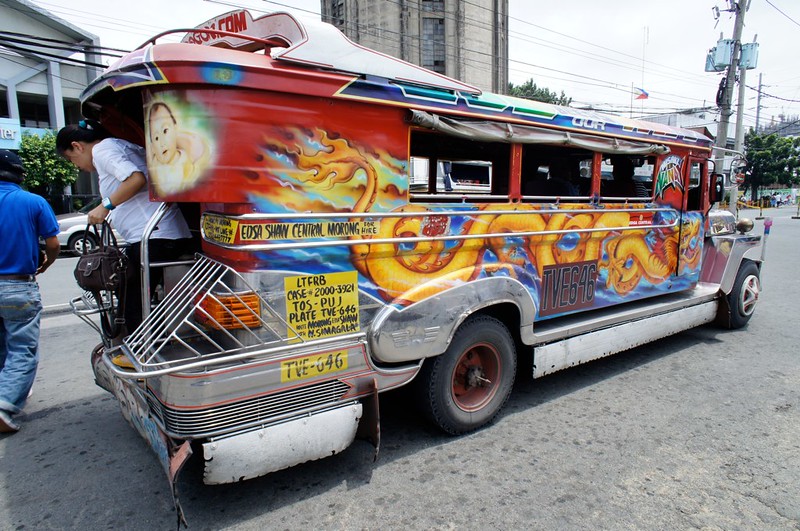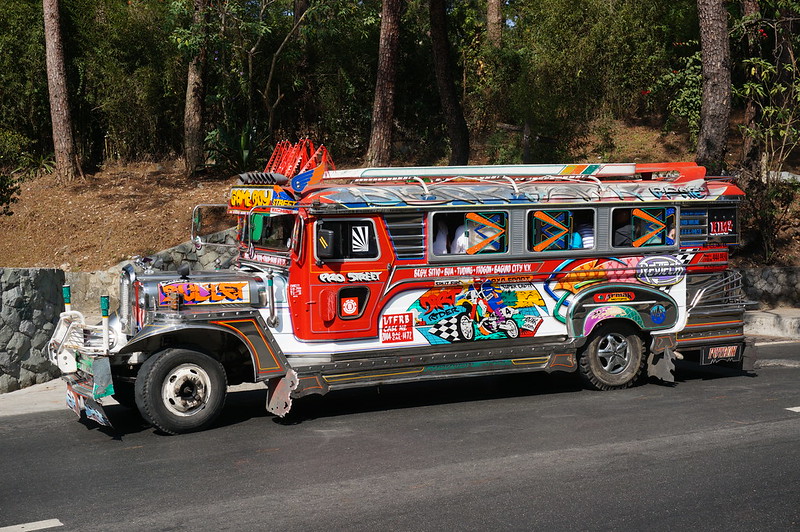
The Death of Jeepney Art? Memorializing Its Cultural Footprint
Jeepneys have been an invaluable part of the modern landscape since the 1950s. Originally created from repurposed military jeeps from World War II, the jeepney has evolved into a staple of the road. However, with the impending jeepney phaseout, what does the future hold for this Filipino icon?
The jeepney is cheap and masa-friendly, able to take on more passengers than a typical public utility vehicle of its size. Its small but sturdy size allows it to be usable from normal roads to highways, to rocky terrain and mountainous roads. Many places around the Philippines—especially far-flung areas—only have the jeepney as their mode of mass transportation.
There’s a reason why it’s been nicknamed “Hari ng Kalsada” for as long as it has existed.
The Impending Jeepney Phaseout

And now that existence is in jeopardy. The government’s protracted efforts to phase out the jeepneys appear to be coming to a head by April 30. This is after attempts to bring it to an end by December 31, 2023, and January 31, 2024 came to a halt due to drivers’ continued protests and refusals to comply.
Protests against the jeepney phaseout by drivers’ unions like PISTON have been ongoing for years, including multiple strikes in 2023. The government does not appear to be budging, however. Despite the mass mobilizations, the government has refused to hear concerns of jeepney drivers.
The definitive issue of the phaseout is centralized largely on the expensive replacement vehicles the government is pushing for. The vehicles are imported and transport groups say that acquiring one would put them into debt the rest of their life. Especially as the new vehicles don’t come with a substantial increase in fares, many will take their entire lives to pay off the debt.
Is the death of the jeepney assured? It’s more than likely at this point, even as many continue the fight against the phaseout. A relic of a more bustling past and a continued symbol of the everyman, the jeepney will likely not leave our collective memory even with the phaseout.
So let’s look instead at memorializing the artwork that comes with many jeepneys today.
Jeepney Art: A Philippine Vernacular

The artwork in jeepneys are very much uniquely Filipino. You can still catch a ride at Marcos Highway and see many jeepneys with gaudy artworks framing their vehicle.
Most of what plies through the backstreets and major roads of the country are very colorful. It’s always bright reds or greens or yellows that journey through the road. The pastel colors extend to the roofs and even the chairs, with it being either made of vinyl or covered with plastic.
The front also gives it a flavor most vehicles don’t have. It has large bumpers and the top portion of the front tends to be covered by giant painted artwork. It’s very distinct, and very easy to spot from miles away.
There is a variety of different artworks that come with the body of a jeep. Some are just very plain: red or green colors for the body, strong yellows on the side to indicate routes. Maybe a banderita or two up front for extra festiveness.
How Unique is Your Jeepney?
Jeepney art is grand, inspired with images of dragons, animals, or natural landscapes. Some jeepneys will have images like the Mayon Volcano or Mount Fuji or other iconic mountains on their side. Other would even have churches drawn in, as a way of honoring their faith while creating monuments of the local parishes.
Some jeepneys reference different pop culture phenomena, mostly action films: Predator, Rambo, the Terminator, and other classic action films from the past. You can ride many jeepneys featuring portraits of Vin Diesel or Arnold Schwarzenegger, recognizable even if their faces are morphed by the art.
That’s not to mention the additional curios that exist inside the jeepney, from giant flashing lights of different colors to an assortment of dolls and figurines hanging or stuck on the dashboard. To add to its kitschiness, many jeepneys are constantly playing loud music while driving through the highways, only lowering the volume to hear where one’s pamasahe will go.
Asian Tradition of Vehicular Artwork

Painting vehicles is not a predominantly Asian thing, but of course there is something to be said about the way we do things. The Philippines isn’t the only country that paints its vehicles the way that we do, and there are multiple places where public transportation is as colorful as the jeepney.
A study from sociology professor Erik Cohen found that in places like Pakistan, India, and Thailand, painting of public utility vehicles “plays a role in national identity politics.” Jeepneys, in this regard, have a way of mythologizing provincial life or integrating Western commercialism into our culture. It can also be used to portray “more political and civic themes.”
There’s a variety of case studies around so-called “moving art,” but the preservation of it, even the ever-popular jeepney, has been grim.
An interesting case study we can look towards is the rickshaw from Bangladesh. The art is very elaborate and grand, similar to the jeepney, but on a smaller scale. The art is so good that the United Nations Educational, Scientific and Cultural Organization (UNESCO) added it to the Representative List of the Intangible Cultural Heritage of Humanity last year. And yet, it’s still on the verge of disappearing.
The jeepney appears to be as much a part of culture-making as it is a part of culture itself: the art showcases the drivers’ or the artists’ perspective on things, and allows them to memorialize parts of themselves they deem important, whether it’s provincial life, or the new Fast and Furious movie, or their families.
It is as much a part of our cultural heritage as something like Luneta. More importantly, it is still an active part of cultural creation.
Moving Forward: Memorializing the Masa

If the defense of the jeepney from many sectors beyond transport groups like PISTON baffle you, it’s because the jeepney is a part of the everyday Filipino experience. It’s a bright, unique spot in our day-to-day drudgery, a reminder of how we persevere and find color even in the harsh world we were born in.
The jeepney is the symbol of the masa. It is an intangible but important part of our national identity. With the destruction of the traditional jeepney due to the phaseout, it’s good to recognize the art that came with the medium. Maybe the new mini-bus-like cars replacing the jeepney will create their own explosion of Filipino work, maybe not. But we should at least recognize this uniquely Filipino transportation system that may be forever lost with the phaseout.


